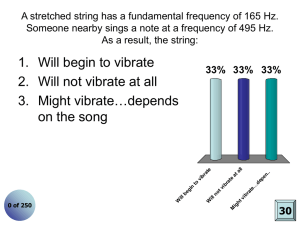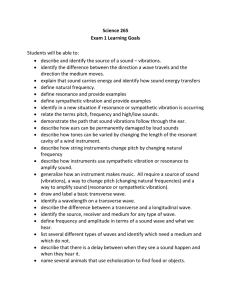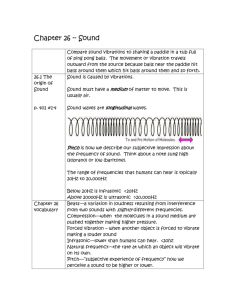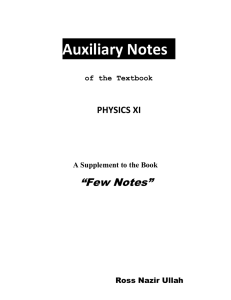Applications of Waves and Vibrations
advertisement
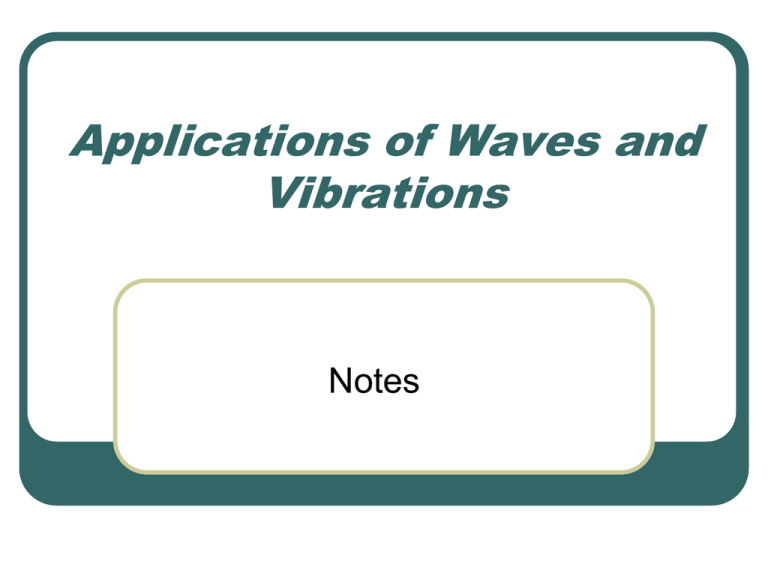
Applications of Waves and Vibrations Notes Waves Characteristics • Wavelength (λ) • Frequency (f) • Period (T) • Wave speed (v) • Phase (Φ) Interference ? When 2 or more waves in a medium pass through the same point at the same time they overlap >> interference Interference can be either: • Constructive • Destructive Interference - Constructive When the wave concurrence results in an additive effect such that the amplitude of the resulting wave is greater than the originals Interference - Destructive When the wave concurrence results in an additive effect such that the amplitude of the resulting wave is less than the originals How are the overlap effects shown? Add the corresponding amplitudes for each wave at the point of interest • Law of Superposition of waves Wave1 Wave2 = Result How is wave interference useful? In optics • When determining if machined parts are flat – examine the optical response when light is shone on the metal (Fig 9-21) In acoustics • when designing auditoriums to eliminate sound • • dead spots where sound is out of phase and muffled When reducing “noise” in aircraft with sound generators Tuning musical instruments by using “beats” between string frequencies Forced Vibrations If an outside force is applied at regular intervals to an object, the object will be forced to vibrate at the frequency of the outside force Can be good or bad! Forced Vibrations - good examples Musical instruments – piano or guitar • Struck string causes the sound board to vibrate at the string frequency, increasing volume Reed instruments – saxophone, guitar • Reed vibrations cause columns of air to vibrate inside the instrument, amplifying the sound. Loudspeakers • Electric signals force speaker cones to vibrate, thus setting up air motion - (longitudinal waves) which are heard as sound. Forced Vibrations – bad examples Mechanical systems • Forced vibrations cause the machines to vibrate at unwanted frequencies • Can cause overheating, undue wear, misalignment • Rubber mounts are used to isolate the mechanical parts or damp out the vibrations ? Natural Frequency of an object Frequency at which an object continues to vibrate on its own after being set in motion, for example: • Swing • Pendulum • Bad shock absorbers Combine natural frequency and forced vibration If both frequencies match, resonance occurs, and the amplitude of vibration increases dramatically • Tacoma Narrows bridge disaster If the frequencies do not match, little energy is transferred from the forced vibration to the object • Try to “pump” a swing at some frequency that is not natural to the swing – little effect! Resonance Mechanical techniques are used to minimize this phenomenon in engines • Harmonic balancers, precision flywheels, cylinder firing order Resonance is used extensively in electronic circuits for tuning, phase matching, etc Summary Terms Interference Forced vibrations Resonance • Constructive • Destructive • Superposition

